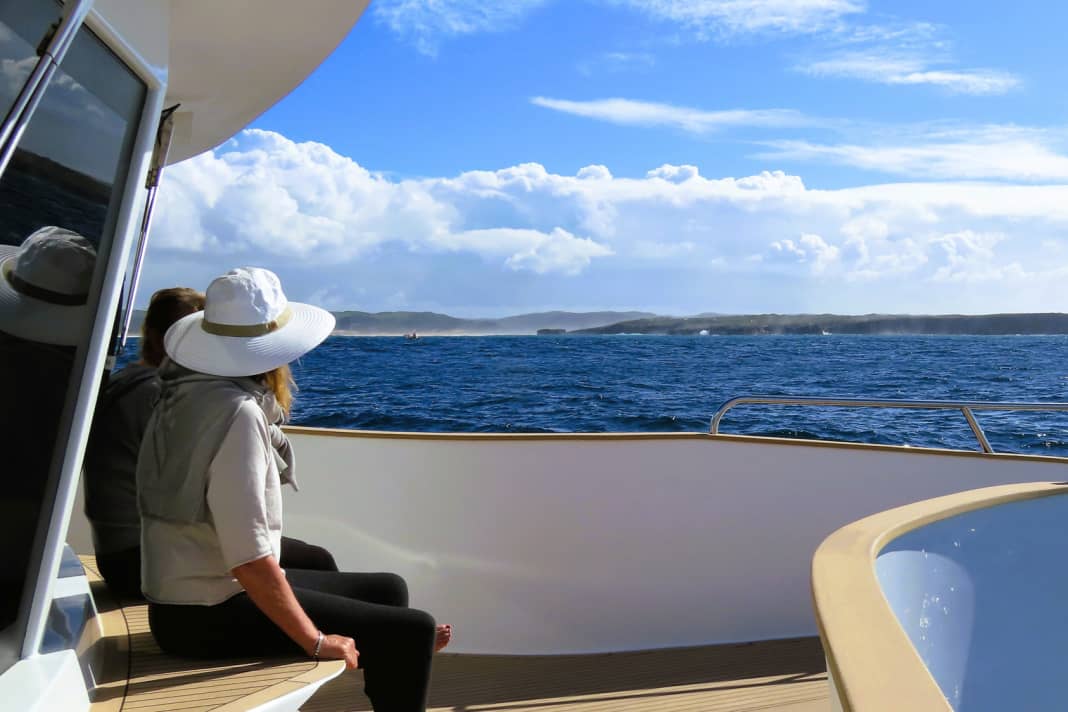





Pierre Colin started the crossing in Portimao in Portugal. From there, he travelled to the Bermuda Islands. The destination was the east coast of the USA. A stopover was made in Ponta Delgada on the Azores.
As Pierre Colin says, January is not the best time to be on the water at high latitudes. "So we had to extend our route to sail around some of the low-pressure areas." He made the crossing with the LEEN 72 accompanied by another person.
As the skipper reports, the weather conditions were a mixture of fine and rough seas.
The yacht always responded well to the different conditions."
Two days before they were due to reach Bermuda, the crew on board were unable to avoid a low pressure area from the south-west. The trimaran had behaved very well during the winds of up to 65 knots. There were also 4.5 metre high waves for two hours. As Pierre Colin explains, the crew travelled on to Bermuda after the front. Here too, "Elle" showed that she was able to survive these rough seas without much effort.
First crossing without sails
However, the weather had lengthened the route and reduced the average speeds. "I was careful with our speeds even when the sea was good, as this crossing without sails was a first for me," says Pierre Colin. The fuel gauge data for the two days and the associated computer data were therefore lost. "I wanted to stay under ten litres per hour," says the skipper.
"We stayed between 1100 and 1200 rpm." Under the various sea conditions, the entire drive had linear speeds. Fuel consumption was also constant. The engine oil was clean after the crossing. This made it clear that the engine had not been overstressed. The on-board computer had shown an average speed of 7.2 knots - according to the skipper, this had been 7.6 knots before the front entered. The surface route was 250 nm compared to the GPS. "We lost 1.5 days between the contour of the depression and this bad weather," says Pierre Colin. "Elle" felt comfortable even in bad weather, as the skipper reports.
The logbook analysis
Between Portimao and Ponta Delgada, the crew sailed in accordance with the surface data within five days at an average speed of 8 knots and a consumption of 15 l/h, 1/9 l/sm. From Ponta Delgeda to St George it was 7.6 kn within 13 days. During this period, the consumption was 10.2 l/h, 1.4 l/sm, as the boat owner reports.
The crew always felt safe on board, even in storms. On the three hulls without stabilisers, the trimaran maintained a good trim and the bow did not dip too much. According to the skipper, the stern was also very stable. The dinghy in the garage had not moved. There were unsecured canisters in front of the dinghy that did not move.
Generator on trimaran did not have to be started
According to the skipper, the furniture has held up well. Only one or two drawers in the kitchen had to be readjusted. The screws would require suitable dowels to hold everything in place on the trimaran. The hobs and oven were in good order. The extractor bonnet worked very well, but needed a better locking mechanism, according to the boat owner. The generator on board did not have to be started once by the crew. The alternator and the solar system were enough to charge the batteries. Pierre Colin is convinced by the installation of the battery and the inverter. The crew appreciated all the electronic options, such as Wi-Fi and the "Dockmate" mooring system. The skipper describes the wheelhouse area as a "really nice living space on an ocean crossing".
"Elle" is an undeniably solid and seaworthy boat. The fittings and equipment have made it easy for the crew to live on board. In addition, the trimaran has three beautiful cabins, a very cosy wheelhouse area and an exceptional fly bridge.
The boat met our expectations: The comfort, safety and reliability, fuel consumption and speed have never disappointed us," summarises Pierre Colin.
Technical data
- Shipyard: Leen-Trimarans
- Length over everything: 21,95 m
- Width: 8,8 m
- Depth:1,37 m
- Fuel tank: 1320 l
- Max. motorisation: 330 HP

